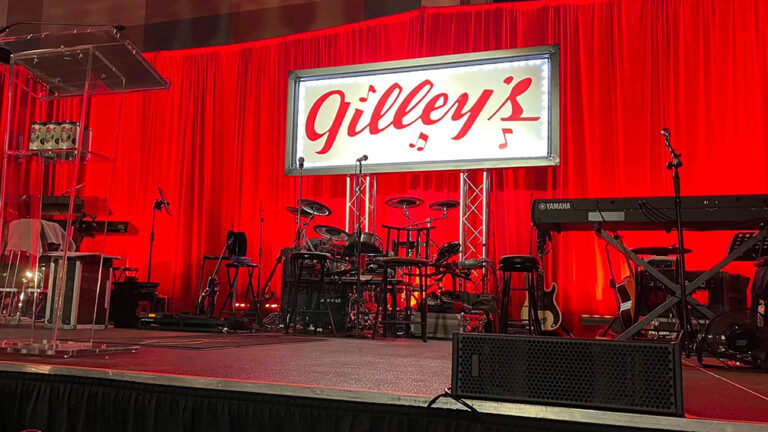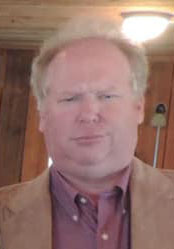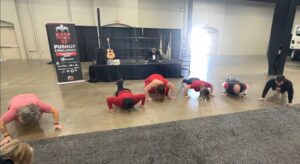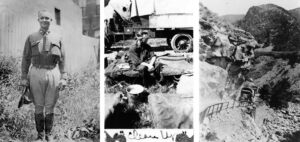Few American performers are as closely associated with nightclubs — or in the case of country music, “honky-tonks” — than Mickey Gilley. The long-time musician, who died in early May at the age of 86, was the king of the honky-tonk movement that consumed country music during the 1980s.
Before there was a “Billy Bob’s,” Gilley held the reigns of the most notable honky-tonk in the nation. Gilley’s Club, the self-billed “World’s Largest Honky-Tonk,” in Pasadena, Texas, served as the Houston area’s most popular hot spot in the 1970s before bursting to both national and international fame in the 1980s. And as Gilley raked in the profits from his nightclub, his notoriety as a performer grew. Gilley’s Club not only served as a business venture for Mickey Gilley, but it also became a springboard for his success in Nashville.
But it was a long road to the spotlight for Gilley, a man who had to step out of the shadow of not one but two successful cousins who drew enough limelight for any family.
Gilley made a name for himself in Texas, but he hailed from Mississippi, born there in 1937. Gilley’s first cousins — and best friends as a youngster — were future rock ’n’ roll icon Jerry Lee Lewis and television evangelist Jimmy Swaggart.
But while his cousins each found their way into their chosen high-profile occupations, Gilley stumbled. Like Lewis, Gilley excelled at playing the piano, but he learned his style from his older cousin who burst onto the Memphis music scene in the mid-1950s and soon became a headlining rockabilly act. Gilley could see that the market only needed one Jerry Lee Lewis, so he turned his attention to Jimmy Swaggart’s niche. In fact, Gilley once said that he, Lewis and Swaggart all tried their hands at evangelism, but they didn’t have the same natural talent as Swaggart — a talent that eventually turned the young minister into a multimillionaire.
While his cousins made their way to international fame, Gilley settled into a domestic life in Houston, marrying and working at an engineering firm. In fact, he had all but given up thoughts of a music career … until he heard one of Jerry Lee Lewis’ early recordings on Sun Records. Lewis’ success motivated Gilley enough to enter a Houston recording studio to turn out his first record.
Gilley later described the forgotten single as “awful.”
Despite a disastrous first record under his belt, interest in the entertainment business burned in Gilley’s heart. He eventually became proficient enough on the piano to work as a studio musician, and by 1960 he was on the road, playing nightclubs between Houston and southern Alabama.
However, his recording efforts, even after signing with Dot Records, didn’t succeed like his personal appearances. Eventually Gilley had a local hit in Houston with a cover of a Warner Mack song, “Is It Wrong?” But then again, the tune reminded audiences of Gilley’s more famous cousin Jerry Lee Lewis who, by this time, was a full-blown rock ’n ’ roll star.
Gilley continued playing nightclubs through the 1960s, focusing on the Houston area. He had a regional hit with “Lonely Wine” in 1964, but the song attracted little national interest.
In the early 1970s, Gilley became enamored enough with nightclubs that he joined forces with longtime friend Sherwood Cryer to open Gilley’s Club just outside of Houston in Pasadena. While Gilley became a well-known musician headlining his own nightclub, recording fame continued to elude him; he just couldn’t overcome the similarities between his music and that of Lewis.
When he received an opportunity to record a complete album, Gilley decided he needed a change. Taking an “I can’t join ’em, so I’ll beat ’em” attitude, he recorded an album in 1974. Once again, his efforts failed. The lack of success began to impact Gilley’s mental state. He noted that he felt Lewis’ style as his own, and his inability to compete nearly “drove him nuts.”
But later that year a new style found Mickey Gilley.
At the urging of someone in the Gilley’s Club ticket office, Gilley recorded “She Calls Me Baby,” intended for play in Houston area jukeboxes. The B-side of the recording was a steel guitar-led rendition of “Room Full of Roses.” While the primary song met with no success, Gilley won over Houstonians with the B side tune.
He took the record to Nashville, and after being turned down by every studio in town, he traveled to California, where he signed with the newly formed Playboy record label. In short order, “Room Full of Roses” succeeded and landed Gilley a Top 10 record. By the end of 1974, Playboy released “City Lights,” a single that reached No. 1.
Mickey Gilley had finally climbed out of his cousins’ shadows.
Through the latter half of the 1970s, Gilley’s popularity as a recording artist grew. Songs like “Bouquet of Roses” and “Don’t the Girls All Get Prettier at Closing Time” landed on the charts, as did two more No. 1 hits, “Honky-Tonk Memories” and “Chains of Love.”
This success gained Gilley a new recording contract, this time with Epic Records.
While his recording and new-found touring demand took up much of Gilley’s time, he continued to headline in his nightclub as much as possible. There he played to honky-tonk music-loving crowds and had the freedom to perform both his music and the Jerry Lee Lewis style he continued to love. Soon, he had to hire other performers to play piano at Gilley’s Club, as his work outside of Houston became overwhelming.
Gilley had been trying to become a country music star for over two decades, and success arrived in a big way. But he had little idea that Hollywood, not Nashville, would provide the boost he needed to become not only a bona-fide country music superstar but a cultural icon as well. If you had told him the boost would come from actor John Travolta, best known as the star of the disco-laden movie “Saturday Night Fever,” Gilley might have shied away.
Until next time when we discuss Gilley’s burst into the stratosphere of country music, don’t let the lights of honky-tonks along the sides of the interstates distract you. Dial up a little of Mickey Gilley’s 1970s music and you’ll have a personal honky-tonk show in your cab.
Since retiring from a career as an outdoor recreation professional from the State of Arkansas, Kris Rutherford has worked as a freelance writer and, with his wife, owns and publishes a small Northeast Texas newspaper, The Roxton Progress. Kris has worked as a ghostwriter and editor and has authored seven books of his own. He became interested in the trucking industry as a child in the 1970s when his family traveled the interstates twice a year between their home in Maine and their native Texas. He has been a classic country music enthusiast since the age of nine when he developed a special interest in trucking songs.














